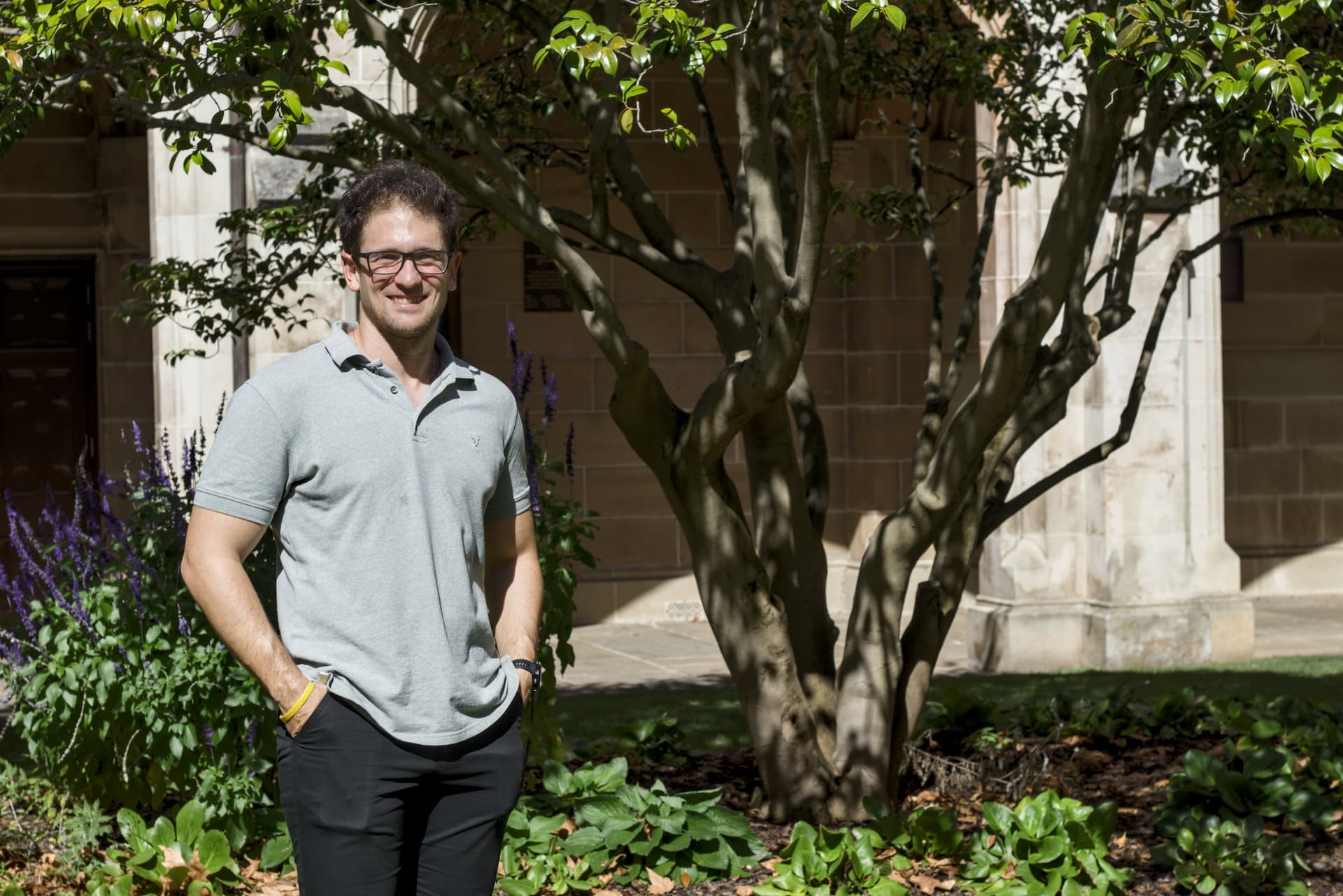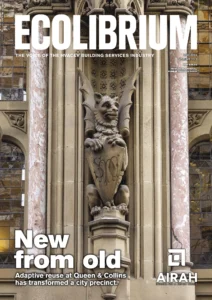
Geothermal cooling is relatively underdeveloped in Australia, but as Ecolibrium staff writer Nick Johns-Wickberg discovers, its potential is huge.
Coober Pedy might be on to something. Even in the face of 50°C summer days and sub-zero winter nights, the unusual South Australian opal mining town maintains comfortable temperatures year-round.
The secret lies beneath the Earth’s surface, as do about 50 per cent of the town’s houses. With the ultimate layer of thermal mass protecting these buildings from the temperature fluctuations above, the air inside them remains at between 19–25°C no matter what’s happening outside. You couldn’t ask for more from even the hardest-working air conditioner.
Of course, ventilating these subterranean homes also requires complex HVAC systems, but that’s a topic for another story.
The good news is that you don’t have to venture out to the remote South Australian desert – or even a nearby cave – to experience geothermal cooling. The technology already exists, and it’s not as far below the surface as you might expect.
Familiar facets
Dr Luis Antonio Bandeira Neto is a research fellow specialising in geotechnical engineering at the University of Melbourne. He also works as a geothermal design engineer at Fourth Element Energy (4EE).
Bandeira Neto says geothermal heating and cooling systems that use ground-source heat pumps (GSHPs) are, in principle, not that different from the classic heat pumps with which we’ve all become so familiar.
“GSHP systems work in a very similar way,” he says. “The only difference is that the heat is not discarded into the air, but into the underground soil and rock materials.”
Although the principles remain broadly the same, there are certain pieces of specialised kit required to operate a GSHP.
“The main additional component is the geothermal energy pipe circuit, which is required to circulate water and exchange heat,” Bandeira Neto says. “But on the building side, the system may operate as any other air-source system without additional requirements.”
He adds that there are also hybrid GSHPs on the Australian market that work in conjunction with other heating and cooling systems, including water-source heat pumps.
Keeping it shallow
Think of geothermal systems and you might imagine sparse volcanic fields in Iceland, with immense drills digging deep below the rocky surface to harness the power of the natural steam held underground.
Thankfully, this rigamarole isn’t necessary for geothermal heating and cooling.
“Geothermal heating and cooling is quite different from the use of deep geothermal energy to generate electricity, which requires the excavation of very deep wells and is bound to geological criteria to be feasible,” Bandeira Neto says.
You might be surprised at how little digging is required for GSHPs in comparison to geothermal power production. In fact, all you need is a medium – in this case soil, rock, or a combination of both – that remains at a relatively stable temperature throughout the year.
A 2014 study titled Geothermal energy: Introducing an emerging technology by Bandeira Neto’s University of Melbourne colleagues found that at 10m below the Earth’s surface, temperatures remained almost constantly at 18.6°C. This was despite the surface air temperature ranging from 2.3–41.1°C during the research period.
Bandeira Neto says that, for a GSHP, not even the ultra-consistency you get from a depth of 10m is necessary.
“Just a few meters below the surface, the temperature of the soil is already fairly constant throughout the year in comparison to the atmosphere air, which is enough to efficiently run a GSHP system,” Bandeira Neto says.
“During summer, the underground is cooler than the atmospheric air, so the ground-source system requires less energy to reject heat in comparison to air-source systems.
“Of course, there are more details that must be considered in any design, and GSHPs may not outperform their air source counterparts in every scenario.”
Global potential
Because GSHPs don’t need to go very deep, they can be installed anywhere in the world where it’s safe and practical to dig a few metres below the surface.
“All areas are suitable for the use of geothermal heating and cooling,” Bandeira Neto says. “Geographical and climate factors may induce different requirements and therefore different designs and levels of economic feasibility, but the system can be installed and can operate anywhere across the globe.”
One of the other reasons why GSHPs could become a viable option worldwide is their flexibility. Much like classic split system air conditioners, a reversible GSHP system provides both heating and cooling.
“A GSHP system may provide a higher coefficient of performance (COP) if serving a fairly balanced heating/cooling demand,” Bandeira Neto says. “This way, the heat discarded by the heat pump during summer is stored underground and harnessed during winter when the heating demands are higher, and the cycle repeats itself.”
On commercial, industrial, and large-scale residential projects where excavation is required anyway, opting for a GSHP might make sense. Because the heat exchange coils are below ground and the equipment is housed in a plant room, the system is practically silent when it’s operating.
An efficient solution
Why go to this extra trouble to install a system? The answer is efficiency or, more precisely, consistency of efficiency.
Rod Roper from RMS Heating and Cooling in Melbourne is a specialist in installing ducted geothermal heating and cooling systems in residential settings. He identifies the relatively stable COP of geothermal heating and cooling systems as a major advantage over air-source systems.
“You can look at the seasonal charts on the other systems, and they really go up and down depending on the outside ambient conditions,” Roper says.
Indeed, the significant fluctuations in air temperature in most parts of the world experience, especially from season to season, make it nigh-on impossible to generalise about the COP of an air-source heat pump.
A good air-source heat pump system might have an average COP of 3.5, which means for every 1kW of energy in, it delivers 3.5kW of heating or cooling. This might increase in optimal conditions. However, it could fall quite dramatically in cold ambient conditions, or depending on whether it is heating or cooling.
Roper says the tests of the GSHPs he installs have shown a fairly consistent COP of 4.5 year-round thanks to the stability of the temperature underground.
He tested in sand, “the worst conditions you can get”, making it possible to publish the COP in other areas.
“We can drill where there’s rock and water, and the COPs will increase,” he adds. “But to avoid doing geotechnical tests on every job, we tested in the absolute worst ground conditions to be able to publish the current COPs.”
Roper’s systems use a custom-designed graphite/graphene heat exchange coil. He describes the component as a “secret herbs and spices recipe” that conducts like copper and increases efficiency.
Bandeira Neto points out that such efficiency gains could potentially be significant in global attempts to reduce greenhouse gas emissions.
“There are several studies in Australia and overseas that show that GSHP systems may reduce energy use, and therefore reduce emissions related to electric energy consumption,” he says.
“If designed correctly, the GSHP can spend less energy to reject or harness heat underground in comparison to an air-source heat pump, and this increased efficiency results in lower energy consumption, and consequently lower emissions.
“It must be noted that there is no ‘silver bullet’ regarding heating and cooling technologies; each design has its own features and requirements, but certainly GSHP systems should be considered more often.”
Open acces
Although GSHPs can work just a few metres underground, the length of coil needed to achieve the requisite heating and cooling loads mean that, if there’s not enough room to lay the coils out horizontally – such as in the footprint of a major building – then the easiest way is to drill down.
Having dedicated more than a decade to bringing the technology to prominence in Australia, Rod Roper from RMS Heating and Cooling in Melbourne realised that accessibility was one of the biggest barriers to residential installations.
In short, the drills – and the vehicles needed to transport them – were just too big to fit in people’s driveways.
Roper’s solution was to design and build a small-scale drill that fits onto the back of a small truck and can be unloaded with a forklift, but can still drill down to 90m below ground level. He also developed a water recycler that reduces the amount of water required for drilling from tens of thousands of litres to about 1,000L.
Ecolibrium attended a residential GSHP installation Roper and his team conducted using this specialised drilling equipment on a sloping Mornington Peninsula property surrounded by trees.
“We’ve got the drilling down to a fine art, so we can get into small blocks, farms … we haven’t hit a property yet where we can’t drill,” Roper says. “As you look at this place, traditionally it could never be serviced, but this has really opened the market up.
“The footprint is really small, so people in the city can still use the product. In the past that couldn’t happen because of access issues,” he says.
“It also keeps it at a price point that’s only 20–30 per cent above a traditional system with a heat pump.”
Balancing the scales
Like many emerging technologies, GSHPs aren’t cheap. While Roper estimates that the systems he installs come out at only 20–30 per cent more expensive than residential air- source heat pumps, those economies of scale aren’t necessarily the same on bigger projects.
As Bandeira Neto points out, the relative rarity of the technology in Australia also drives up costs and creates scepticism.
“Here in Australia, we have engineers and installers capable of designing and implementing efficient GSHP systems,” Bandeira Neto says. “However, it is still a more specialised market, which increases the product cost. The capital investment upfront is expensive, and builders see it as a risky investment, even though it should pay off with time.
“There is a preconception that the system does not work well,” Bandeira Neto adds, “but this is reducing as more projects successfully implement the technology. Broader implementation may eventually result in better training, lower implementation costs and faster construction.”
For inspiration, those looking to advance the technology in Australia could do worse than look north.
“Our experience shows that the GSHP markets in Europe and North America are more mature, since they have more installations using the technology,” Bandeira Neto says. “But considering Australia’s investments in housing and infrastructure, I believe we are well placed to expand the number of GSHP systems here.”

This article appears in Ecolibrium’s May 2024 edition
View the archive of previous editions
Latest edition
See everything from the latest edition of Ecolibrium, AIRAH’s official journal.





